Discover 15 hidden attractions, cool sights, and unusual things to do in Tuscaloosa (United States). Don't miss out on these must-see attractions: Paul W. Bryant Museum, Downtown Tuscaloosa Historic District, and Lake Lurleen State Park. Also, be sure to include Bama Theatre in your itinerary.
Below, you can find the list of the most amazing places you should visit in Tuscaloosa (Alabama).
Table of Contents
Paul W. Bryant Museum
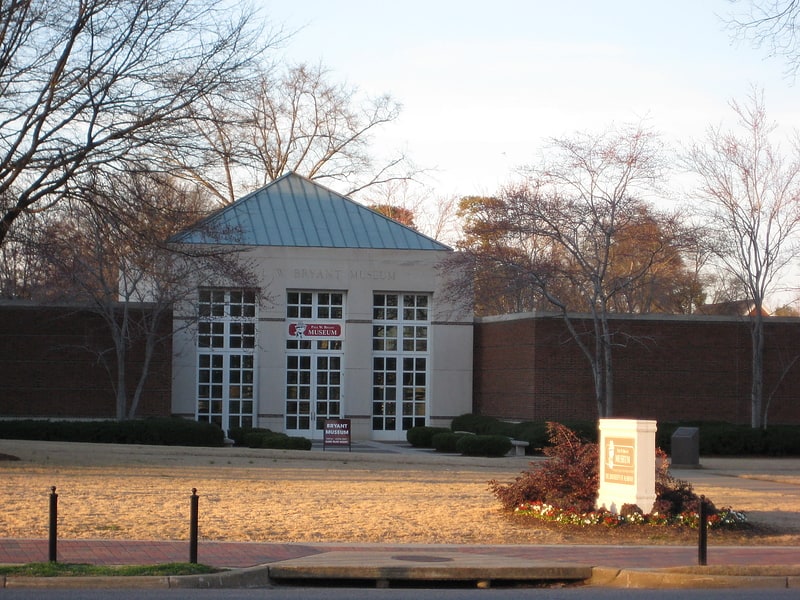
Museum in Tuscaloosa, Alabama. The Paul W. Bryant Museum is located on the campus of the University of Alabama, in Tuscaloosa, Alabama. Founded in 1985, the museum was opened in 1988 to "house the history of Alabama football, with special emphasis on the legendary coach" Bear Bryant.[1]
Downtown Tuscaloosa Historic District
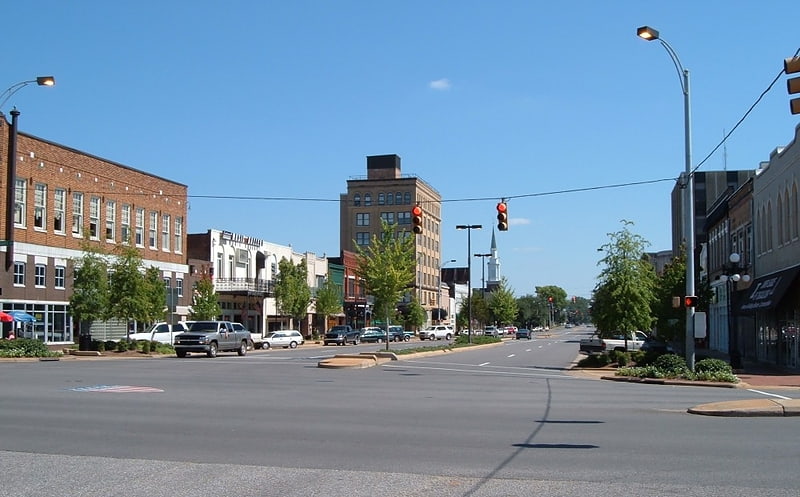
The Downtown Tuscaloosa Historic District is a historic district which was first listed on the National Register of Historic Places in 1986. The listing included 50 contributing buildings on 27 acres, including the historic city hall of Tuscaloosa. It included a total of 91 buildings, with non-contributing buildings and ones deemed marginally contributing. The listing was expanded in 1989 with the addition of 4 acres including eight more contributing buildings.
The original district was roughly bounded by Fourth St. Twenty-second Ave. Seventh St. and Greensboro Ave. It includes the separately-NRHP-listed Bama Theatre-City Hall Building and City National Bank (1922).[2]
Lake Lurleen State Park
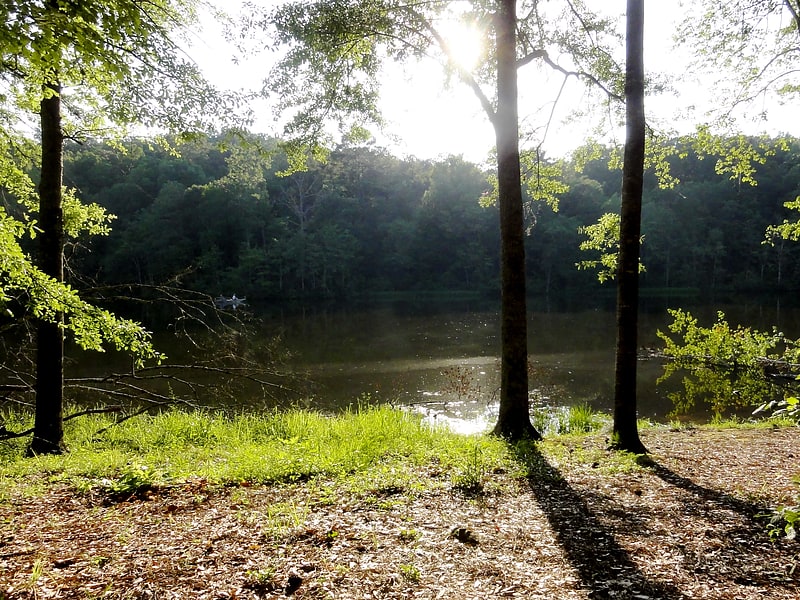
County park in Tuscaloosa County, Alabama. Lake Lurleen State Park is a publicly owned recreation area located on U.S. Highway 82 approximately 9 miles northwest of Northport in Tuscaloosa County, Alabama. The state park's 1,625 acres include 250-acre Lake Lurleen and a 23-mile trail system. It is operated by the Alabama Department of Conservation and Natural Resources.[3]
Bama Theatre
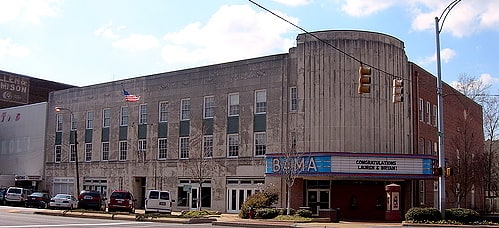
Theatre in Tuscaloosa, Alabama. The Bama Theatre is a historic theatre in Tuscaloosa, Alabama that currently serves as the city's performing arts center. Its modern redevelopment is the result of cooperation between the Arts Council of Tuscaloosa and the Tuscaloosa County Parks and Recreation Authority. The three-story brick and limestone building is located at the corner of Sixth Street and Greensboro Avenue in downtown Tuscaloosa. It was added to the National Register of Historic Places on August 30, 1984. It is also a contributing building in the Downtown Tuscaloosa Historic District, NRHP-listed in 1985.[4]
Address: 600 Greensboro Ave, 35401-1750 Tuscaloosa
Battle–Friedman House
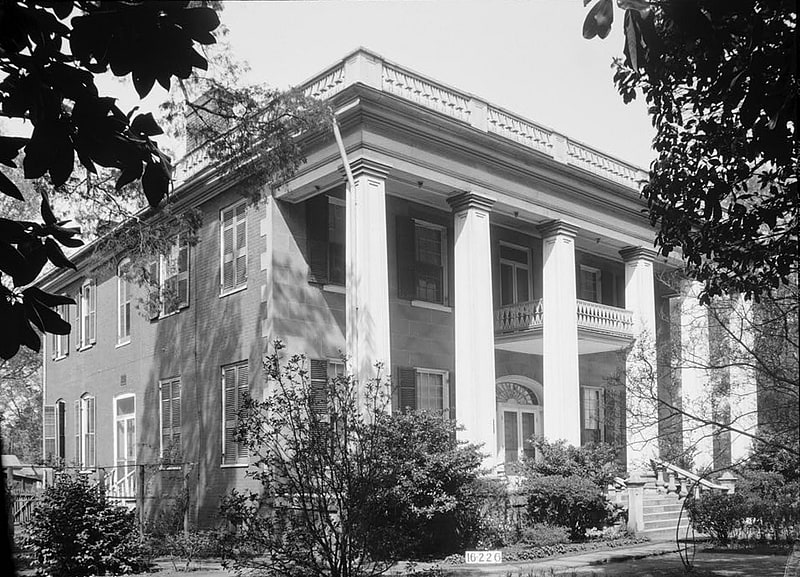
Museum in Tuscaloosa, Alabama. The Battle–Friedman House is an antebellum town home located in Tuscaloosa, Alabama. The house was built in 1835 by Alfred Battle and his wife, Millicent Battle. The house's grounds include the only remaining documented antebellum garden in the state. The house itself is noted for its vernacular use of monumental boxed columns. The Battle family lived in the house until 1875, when the home was purchased by Bernard Friedman. The Friedman family continued to reside in the house until Victor Hugo Friedman died in 1965, leaving the house to the city of Tuscaloosa. The Tuscaloosa County Preservation Society currently maintains the house as a historic house museum. It was added to the National Register of Historic Places in 1972.[5]
Address: 1010 Greensboro Ave, Tuscaloosa
Denny Chimes
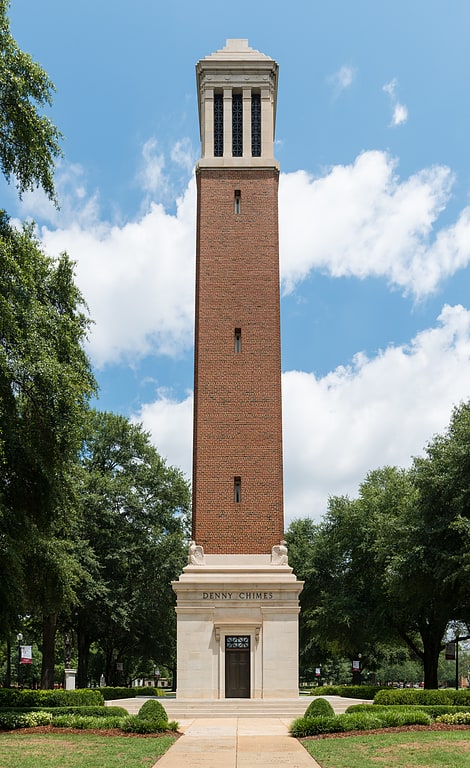
Tower in Tuscaloosa, Alabama. Denny Chimes is a 115-foot tall campanile tower on the south side of The Quad at the University of Alabama, in Tuscaloosa, Alabama. The tower was named in honor of George H. Denny, who served as university president from 1912 to 1936 and then again from 1941 through 1942. It is equipped with a 25-bell carillon. The tower is one of the most visible landmarks on campus.[6]
Tuscaloosa Amphitheater
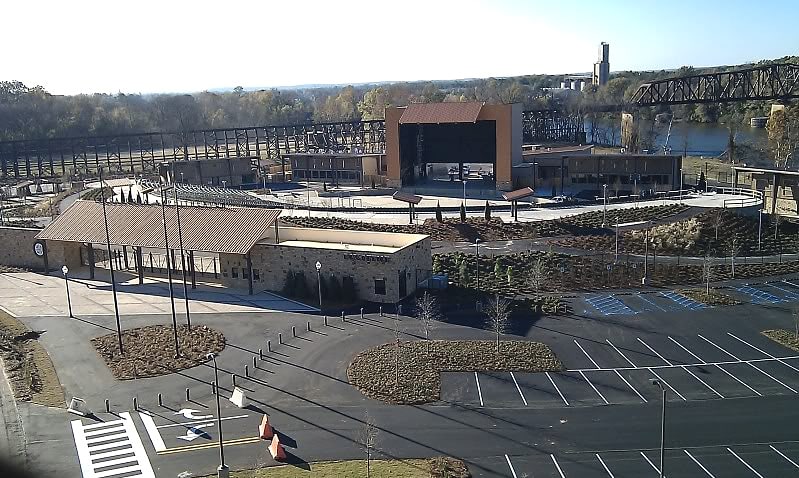
Live music venue in Tuscaloosa, Alabama. The Tuscaloosa Amphitheater is an outdoor amphitheater in Tuscaloosa, Alabama, USA that is used primarily for music performances. It has a seating capacity of 7,470.
The amphitheater is located on Jack Warner Parkway, just beside the Hugh R. Thomas Bridge, only minutes away from the University of Alabama campus and blocks from downtown Tuscaloosa. It is the largest outdoor theater in West Alabama.[7]
Address: Tuscaloosa, 2710 Jack Warner Pkwy, Tuscaloosa, AL 35401-1023
Queen City Pool and Pool House
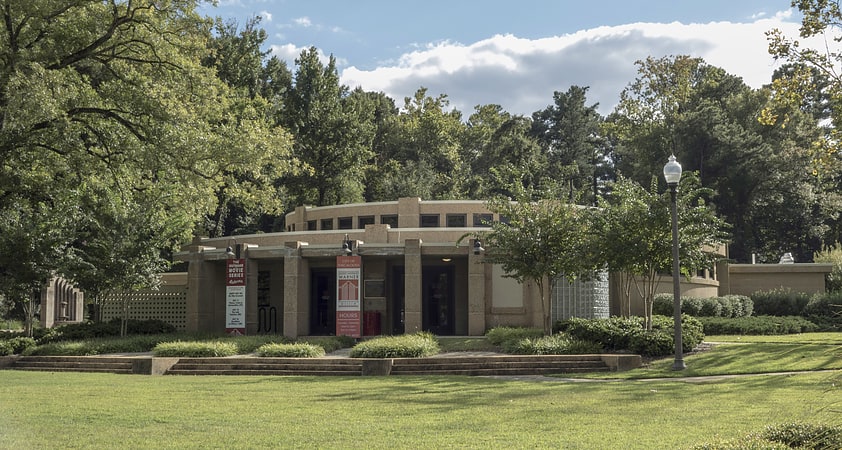
The Queen City Pool and Pool House, also known as the Queen City Pool, is a historic bathhouse and swimming pool located in Tuscaloosa, Alabama, United States. The bathhouse and pool were added to the National Register of Historic Places on September 9, 1992, due to their architectural and historical significance.[8]
Jemison–Van de Graaff Mansion
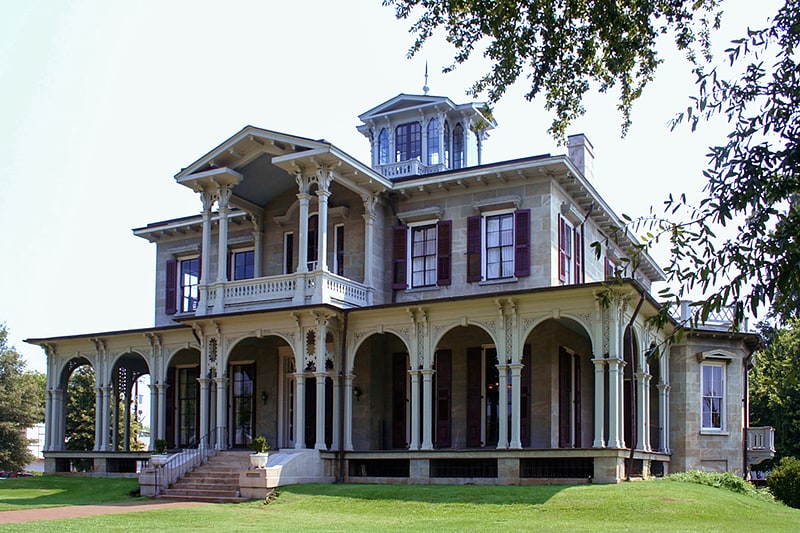
Event venue in Tuscaloosa, Alabama. The Jemison–Van de Graaff Mansion, also known as the Jemison–Van de Graaf–Burchfield House, is a historic house in Tuscaloosa, Alabama, United States. The structure remained a private residence until 1955, when it served first as a library, then publishing house offices, and lastly as a historic house museum. The mansion was added to the National Register of Historic Places on April 19, 1972, due to its architectural significance.[9]
Address: 1305 Greensboro Ave, 35401-2840 Tuscaloosa
United States Federal Building and Courthouse
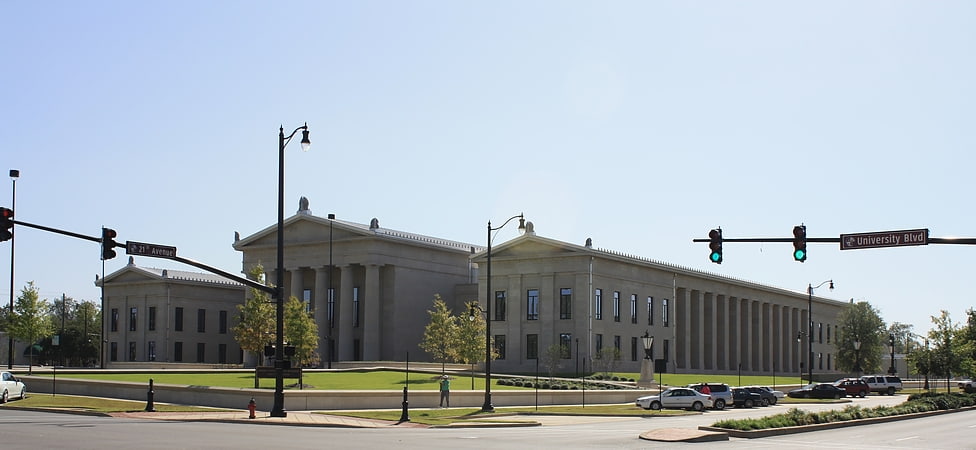
The Tuscaloosa Federal Building and Courthouse is a building in downtown Tuscaloosa, Alabama that houses the United States District Court, United States Bankruptcy Court, the U.S. Marshal Service, the Federal Bureau of Investigation, and the offices of the Social Security Administration. It also includes offices for Alabama's senators and congressional representatives.[10]
Hugh R. Thomas Bridge
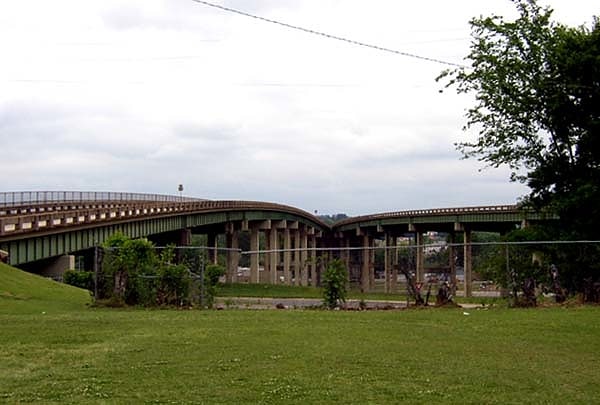
Bridge. The Hugh Rowe Thomas Bridge is a six-lane, girder bridge spanning the Black Warrior River along U.S. Route 43 and Alabama State Route 69, connecting downtown Tuscaloosa and Northport in Tuscaloosa County, Alabama, that opened in 1974. The bridge is split in Tuscaloosa to accommodate two major, one-way thoroughfares, before joining together heading towards Northport. It replaced a lift bridge that was built in 1922 and demolished in 1973.
As of 2008, the average daily traffic count for the bridge is approximately 68,400 vehicles. This is one of four vehicular bridges spanning the Black Warrior in Tuscaloosa. The KCS Railroad (formerly the M&O Railroad) trestle crosses the river nearby and is visible from the bridge.
The bridge was named in honor of Alabama State Representative Hugh Rowe Thomas who was killed in a car wreck in April 1967 while traveling to Montgomery for a special session. He had been elected in 1966 and was just 33 years old. Thomas was one of three children of famed University of Alabama football coach Frank Thomas and wife Frances Rowe.[11]
Address: Wallace Blvd, 35401 Tuscaloosa
Paul Bryant Bridge
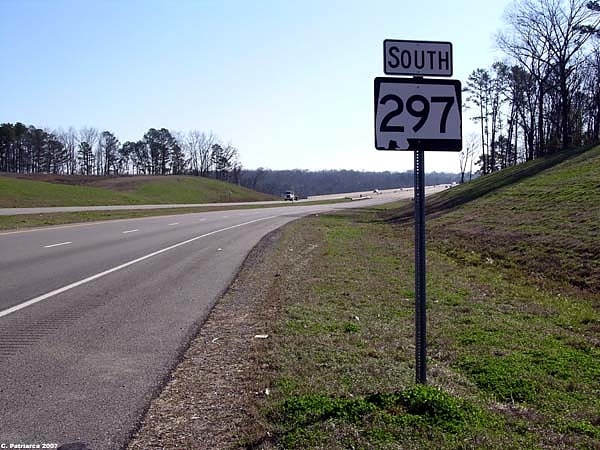
Bridge in Tuscaloosa County. The Paul Bryant Bridge is a four-lane, 150-foot-tall, $28 million bridge spanning the Black Warrior River along Alabama State Route 297 in Tuscaloosa, Alabama. Construction of the 3,785-foot-long, twin-span bridge commenced in March 2000. Originally slated to open in December 2003, construction delays resulted in its opening on April 23, 2004.
Serving as the fourth crossing of the Black Warrior River in Tuscaloosa County, this was the first phase of the larger Warrior Loop project slated for completion by 2012. Constructed by the R.R. Dawson Bridge Company, during the course of its construction, two workers died while on the job in October 2001 and again in April 2003.
In January 2003, then Governor Don Siegleman ordered state transportation director Paul Bowlin to name the bridge in honor of long-time University of Alabama head football coach Paul "Bear" Bryant.[12]
Alabama Museum of Natural History
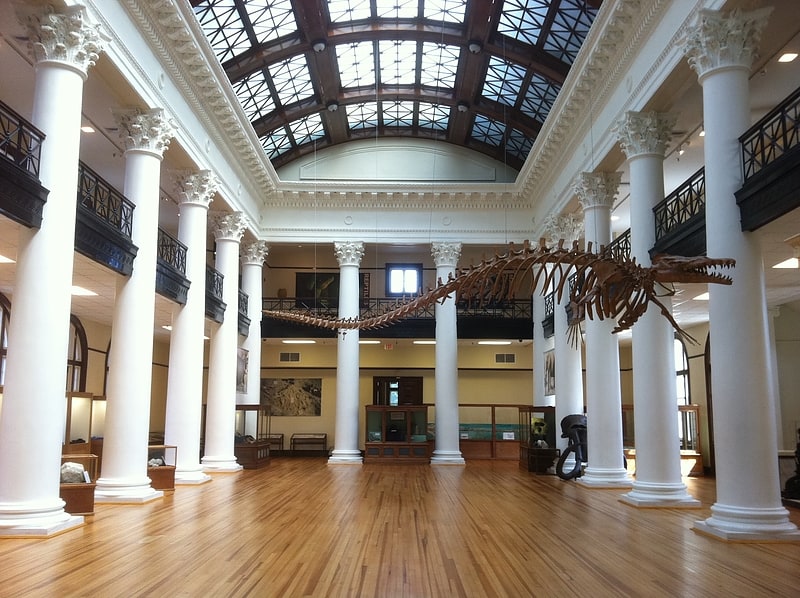
Museum in Tuscaloosa, Alabama. The Alabama Museum of Natural History is the state's natural history museum, located in Smith Hall at the University of Alabama campus in Tuscaloosa. The oldest museum in the state, it was founded in 1831. The exhibits depict the natural diversity of Alabama from the Age of Dinosaurs, the Coal Age, and the Ice Age. Collections include items relating to geology, zoology, mineralogy, paleontology, ethnology, history, and photography. The Grand Gallery Exhibition Hall houses a replica of a Basilosaurus cetoides, an Eocene whale that has been designated as the State Fossil. Exhibits of special interest include the skull of an American mastodon dredged from the Tombigbee River near Demopolis and the Hodges meteorite. The latter hit a woman as it fell to earth near Sylacauga on November 30, 1954. The museum sponsors expeditions throughout the year, as it has since 1979.[13]
Address: 6th Ave, Tuscaloosa
University of Alabama
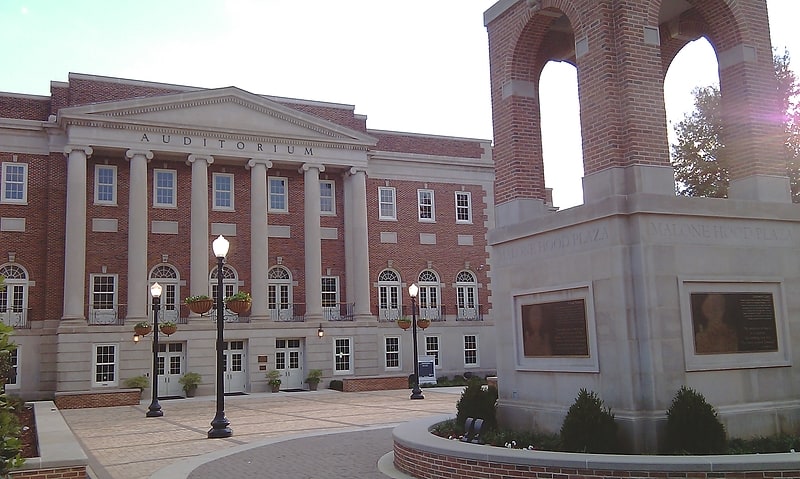
Public university in Tuscaloosa, Alabama. The University of Alabama is a public research university in Tuscaloosa, Alabama. Established in 1820 and opened to students in 1831, the University of Alabama is the oldest and largest of the public universities in Alabama as well as the flagship of the University of Alabama System. It is classified among "R1: Doctoral Universities – Very high research activity".
The university offers programs of study in 13 academic divisions leading to bachelor's, master's, education specialist, and doctoral degrees. The only publicly supported law school in the state is at UA. Other academic programs unavailable elsewhere in Alabama include doctoral programs in anthropology, communication and information sciences, metallurgical engineering, music, Romance languages, and social work.
As one of the first public universities established in the early 19th century southwestern frontier of the United States, the University of Alabama has left a cultural imprint on the state, region and nation over the past two centuries. The school was a center of activity during the American Civil War and the Civil Rights Movement. The University of Alabama varsity football program (nicknamed the Crimson Tide), which was inaugurated in 1892, ranks as one of the ten winningest programs in US history. In a 1913 speech then-president George H. Denny extolled the university as the "capstone of the public school system in the state ", lending the university its current nickname, The Capstone. In addition, university alumni and faculty include 59 Goldwater Scholars, 15 Rhodes Scholars, 16 Truman Scholars, 36 Hollings Scholars, and 16 Boren Scholars.[14]
Tuscaloosa Museum of Art
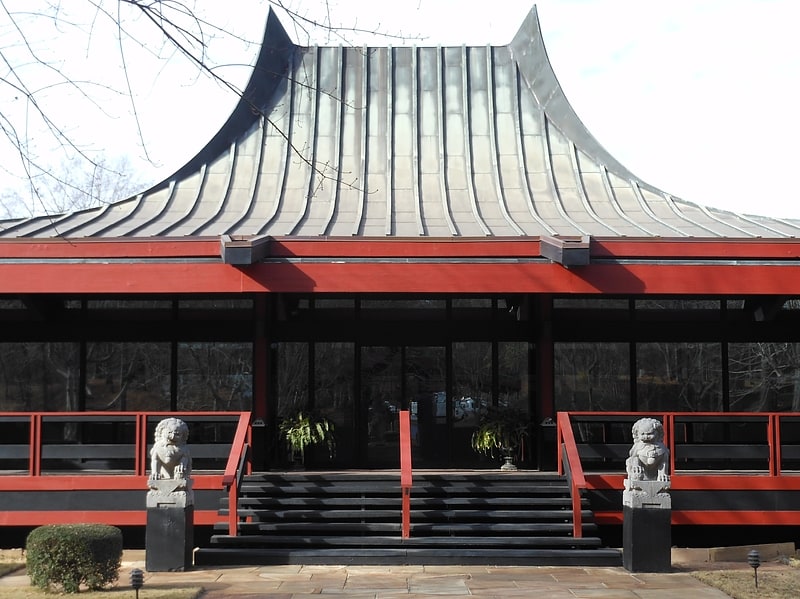
Museum in the Tuscaloosa County, Alabama. The Tuscaloosa Museum of Art, previously the Westervelt-Warner Museum of American Art, was an art museum in Tuscaloosa, Alabama. The museum permanently closed in 2018. It was founded by Tuscaloosa businessman Jack Warner.
The Westervelt-Warner Museum of American Art was the result of 40 years of collecting American art by Jack Warner, CEO of Gulf States Paper, later the Westervelt Company. He founded the museum in 2003 after exhibiting portions of the collection in the headquarters building of the Westervelt Company.
The Westervelt-Warner collection contains more than 500 works from 1775 onwards. Artists represented include John Singer Sargent and Childe Hassam as well as several artists of importance to American Art, including Albert Bierstadt, Rembrandt Peale, Edward Hicks, Thomas Moran, Edward Hopper, Robert Henri, Edward Potthast, and Charles Bird King. Other artists' works include James McNeill Whistler, Andrew Wyeth, Mary Cassatt, and James Peale.
In 2011, the Westervelt-Warner Museum became the Tuscaloosa Museum of Art.[15]
Address: 8316 Mountbatten Rd NE, Tuscaloosa